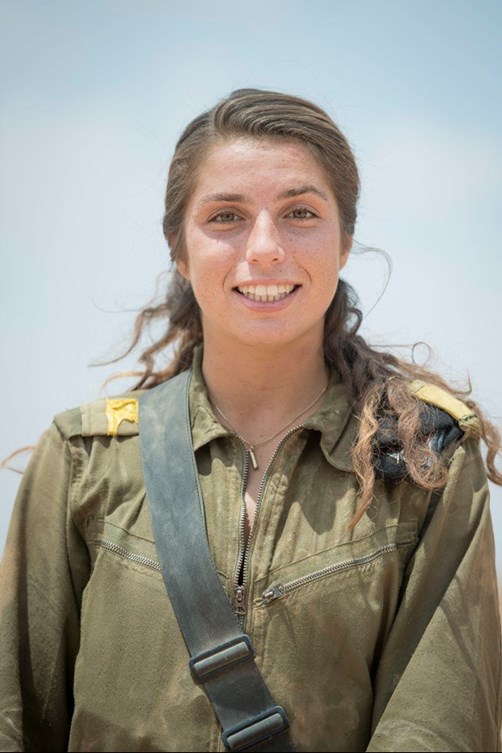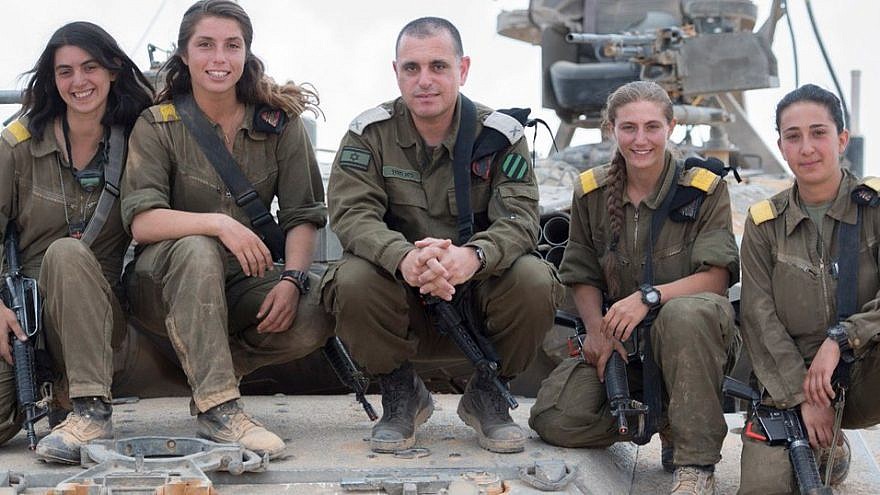The first four female tank commanders in the Israel Defense Forces have successfully completed their grueling training course and will now begin their operational duties. Several additional female soldiers will serve in other duties in tanks.
The new female commanders and tank crew members will conduct critical border-defense missions, though they will not belong to brigades that would maneuver deep into enemy territory in case of war.
“Today, I have concluded it as one of the first four female tank commanders,” she said. “The training course was definitely a mental and physical challenge, which was made even more difficult because we were just four female combat soldiers among a sea of male combat soldiers.
“However, I do believe it was a great success. And this is only thanks to my personal commanders and the other three girls. Army friends are like no other friends you could have in any other place in the world,” said Feld-Davidovici. “Becoming one of the first female tank commanders in the IDF means not only do I get to fulfill my role in defending the country, but I also get the opportunity to bring women forward in combat and open up chances for future generations to defend their country, just like their male counterparts.”

The IDF began incorporating women into units from its very establishment, during the 1948 War of Independence.
Partly due to manpower shortages, women served in combat roles within its ranks during the 1948 conflict, playing a highly active role in artillery and intelligence units.
They also were members of infantry units during that time. However, afterwards women were generally barred from combat service until more recent years, when a change in the military-service law occurred.
IDF commanders today say the integration process is being informed by in-depth examinations of data, and by the results of trials, which shed light on the operational advantages of such reforms.
Some controversy and even some criticism
Israel is one of the few countries in the world that sets mandatory military service for women. Until now, most female combat soldiers have served in mixed-gender light-infantry units, such as Karakal, and the Lions of Jordan, which defend the Egyptian and Jordanian borders.
In 2017, the first female fighter jet deputy squadron commander was appointed, and in 2011, the first combat helicopter female appointed received her wings from the air force.
Now, the IDF Armored Corps is moving forward with a staged plan to incorporate women in border defense missions.
Nevertheless, the program has attracted some controversy and criticism, particularly from a number of conservative commentators and rabbis. Some have questioned whether women could handle the rigors of the Armored Corps; others have feared that having females in combat roles could threaten the country’s national security.
The IDF, for its part, has said that the data created by its trials fully supports the position that women who pass the intensive tests and training courses are fully capable of taking up tank roles (as members of all-female tank crews).
In general, the IDF has remained committed to increasing gender integration, with women serving in combat roles increasing from 547 in 2012 to 2,700 in 2017.
Female soldiers have for many years played a vital role in a range of combat-support units, such as the navy’s operator control rooms.
‘Achieved all goals set for them’
Lt.-Col. Beni Aharon, commander of the Armored Corps Command Battalion, described the intensive training that the female commanders—the first of their kind—underwent.
The purpose of the pilot program, he said, “was to examine whether and how women can be integrated as combat tank commanders” for border-defense missions.
Army recruiters chose candidates for the program from among existing infantry battalions that already incorporate female soldiers. Specifically, he said, they were on the lookout for highly motivated participants.
A four-week selection process included a gathering of medical data, questionnaires that gaged levels of motivation and feedback with the candidates’ commanders.
A group of 30 candidates then made it to the training stage. They began a six-week Armored Corps professional training course held in a base in the Eilat Mountains.
They then underwent an additional 14 weeks of advanced training, which “is nearly identical as the training” for the male soldiers, with a few adaptations to match their future work of defending the Egyptian border.
The trainees gained expertise in firepower, urban warfare, navigation and how to run a tank, stated Lt.-Col. Aharon.
Finally, they began operations in their platoon, which is under the command of the co-ed Karakal unit that secures the border with Egypt.
In the final stage, the IDF selected a number of the female soldiers for the commander’s course, which they completed in recent days.
Aharon described the program as a “success,” adding that “the soldiers achieved all of the goals that were set for them.”
While there were no unusual injuries or illnesses during this time, five female soldiers could not complete the Armored Corps course, mostly due to medical issues that arose during training. A medical team accompanied them throughout the training process.
“The pilot integration program of female tank commanders … ended successfully,” the military said in a statement. Its results will be presented within the next few weeks to senior IDF commanders, who are likely to continue to the program based on its results.


























